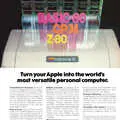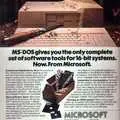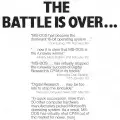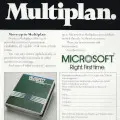
Microsoft Advert - November 1981
From Personal Computer World
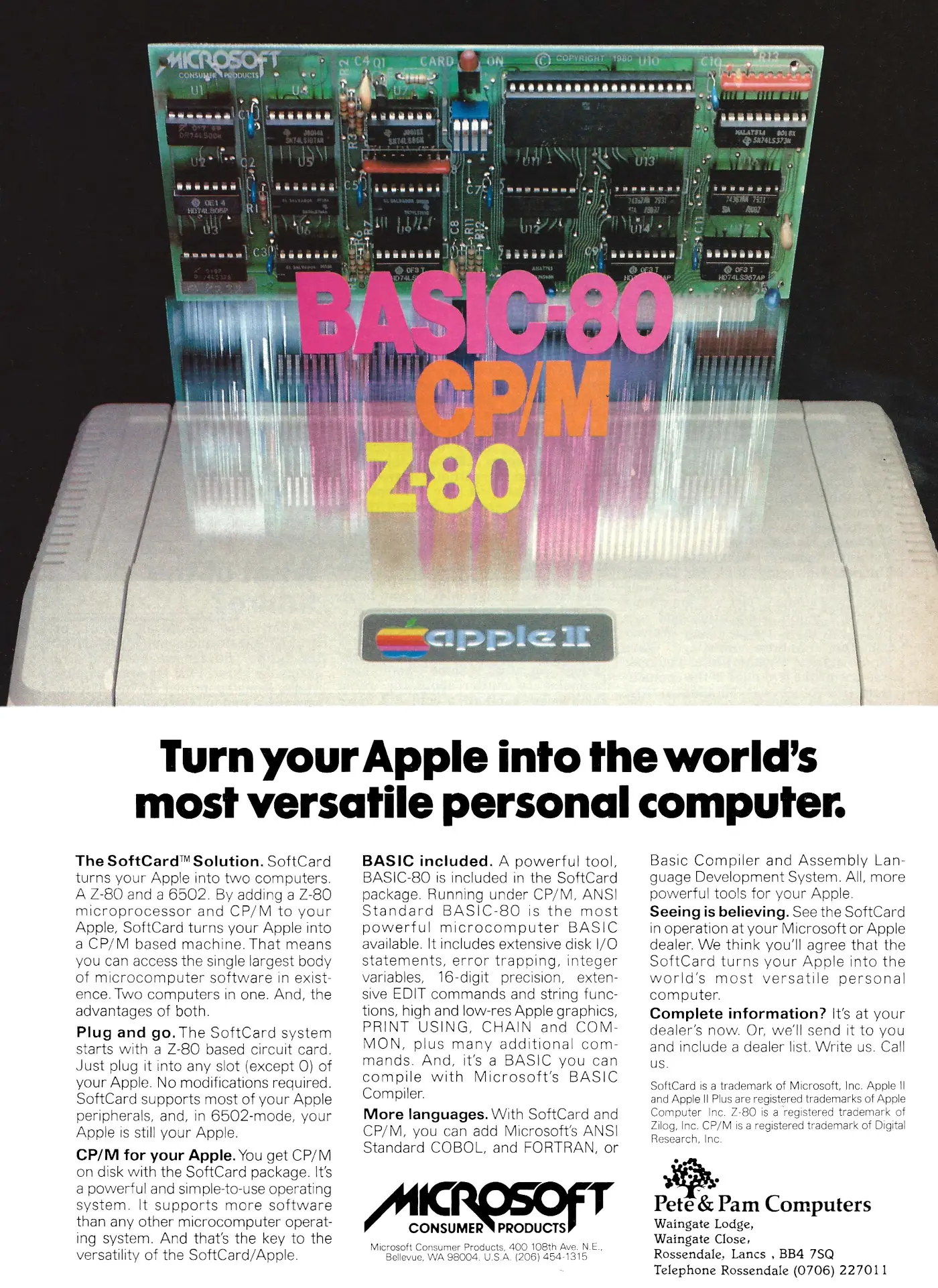
Turn your Apple into the world's most versatile personal computer.
This is a real curiosity from Microsoft which shows how different the company was before the power of its coming hegemony with Intel and its own MS-DOS - and later Windows operating system - corrupted it for the next three decades.
It's for what was the company's first ever hardware product - a Z80 board for the Apple II, which gave the Apple II support for the CP/M operating system.
That's interesting on two levels: firstly, Microsoft's MS-DOS was actually based upon a copy of CP/M that had been cloned by Seattle Computer Products and sold to Microsoft, which it called PC-DOS and sold to IBM as the operating system for its new IBM PC, launched this year.
In turn, MS-DOS and the IBM PC would sideline pretty much every other microcomputer ecosystem, contributing to the death of Digital Research - Gary Kildall's company which had created CP/M way back in 1973.
And secondly, one of the few companies that did hang on in the face of what became known as the WinTel alliance (Windows/Intel) was, ironically, Apple - and the two would become sometimes bitter enemies.
So here is Microsoft's own SoftCard - helping both Digital Research and Apple.
However, it wasn't altruism but a question of software portability that led to Paul Allen suggesting that Microsoft develop a Z80 board, as Microsoft wanted a way to port its extensive range of Intel 8080/Z80 systems software onto the Apple and its growing user base.
The alternative would have been to re-write all its software for the MOS Technology 6502 that the Apple used, but that would be very much "re-inventing the wheel", according to Vern Raburn of Microsoft Consumer Products[1].
Producing a Z80 card for the Apple II sidestepped this and allowed countless hundreds of CP/M and Z80 software houses to now target the Apple ecosystem.
This idea hung around for almost as long as the Apple II itself - which by 1986 seemed to have become known as "the world's longesst-lived micro", at least in Personal Computer World.
The Apple II had been through several versions, including the II+ and the IIe, both of which were more-or-less just speed increases of the original design.
However, in 1985 Apple released the IIc - a "compact and portable" version aimed more at the PCjr's home market and which was very much a sealed unit, somewhat foreshadowing Apple's future move towards completely locked-down systems which were not supposed to be modified in any way.
Nevertheless, despite the lock down, a CP/M board was released for the IIc by Scottish add-on manufacturer Cirtech, even though it was necessary to invalidate the warranty and actually remove the static-sensitive 65C02 processor from the Apple motherboard and shift it over to the CP/M card.
Perhaps unsurprisingly, Cirtech recommended that this was done by an Apple dealer.
Once done, the installed 8MHz Z80H processor and the board it ran on it opened up the IIc to the huge range of CP/M software available in Apple disk format, thanks in part to Microsoft's original SoftCard, as well as Digital Research's Gold Card.
Somewhat ironically though, one of the few software packages which wouldn't run on the Cirtech board was Microsoft's own MBasic interpreter, although this could be fixed with a software patch.
Personal Computer World in its January 1986 edition concluded:
"It seemed impossible for IIc owners to gain access to the vast range of CP/M software available, thanks to the sealed design of the machine. Cirtech deserves credit for producing an add on that is (reasonably) simple to install, simple to use, and which operates well. It must have been a lot harder to design"[2].
Date created: 26 January 2024
Last updated: 11 December 2024
Hint: use left and right cursor keys to navigate between adverts.
Sources
Text and otherwise-uncredited photos © nosher.net 2025. Dollar/GBP conversions, where used, assume $1.50 to £1. "Now" prices are calculated dynamically using average RPI per year.
